by Nick Davis
The Chain Pipefish (Syngnathus louisianae) is a member of the Syngnathidae family (seahorses, pipefish, and seadragons) and is widely distributed throughout the Western Atlantic, from Virginia and Bermuda to the northern Gulf of Mexico, Mexico, and Jamaica. While they typically inhabit brackish estuarine environments, Chain Pipefish are “euryhaline,” meaning they can thrive in a wide range of salinities from marine to freshwater conditions.
The name Syngnathidae (pronounced “sing-NATH-i-dye”) comes from the Greek words syn, meaning “fused,” and gnathus, meaning “jaw,” reflecting the distinctive fused jawbones characteristic of syngnathid fish, such as seahorses and pipefish. Similar to its seahorse relatives, the Chain Pipefish has a long tubular snout for feeding on small crustaceans such as amphipods and mysid shrimp. Its exterior is covered in dermal plates and varies in color, often displaying tan, brown, and white hues, with a pattern of black bands or chains along its body.
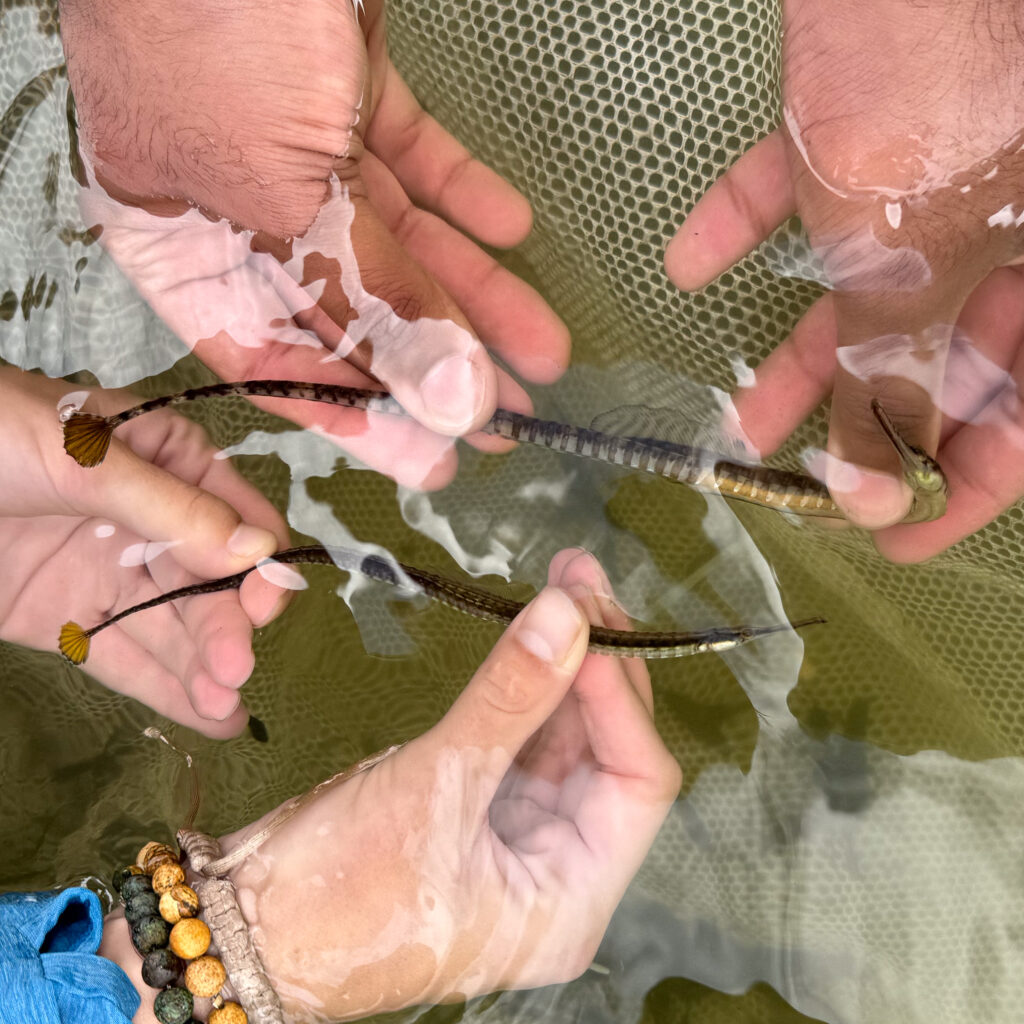
Two freshly netted pipefish – female at top, male at bottom. (By Dr. Sarah Krejci.)
The Chain Pipefish thrives in habitats of submerged aquatic vegetation, often displaying a preference for rich seagrass beds. Seagrass provides optimal habitat for these fish. In addition to protecting them from potential predators, seagrass gives them camouflage, since their slender form and coloration let them blend in with the vegetation. Seagrass meadows also provide prime hunting grounds for this species, as they support the small crustaceans that pipefish feed on.
Like other syngnathid fish, the Chain Pipefish exhibits a sex-role reversal where the male cares for the eggs. The female deposits her eggs into a brood pouch on the male’s belly, where they are fertilized. The developing eggs remain protected in the pouch, continuing their growth until they have hatched and the larvae have matured enough to be released.
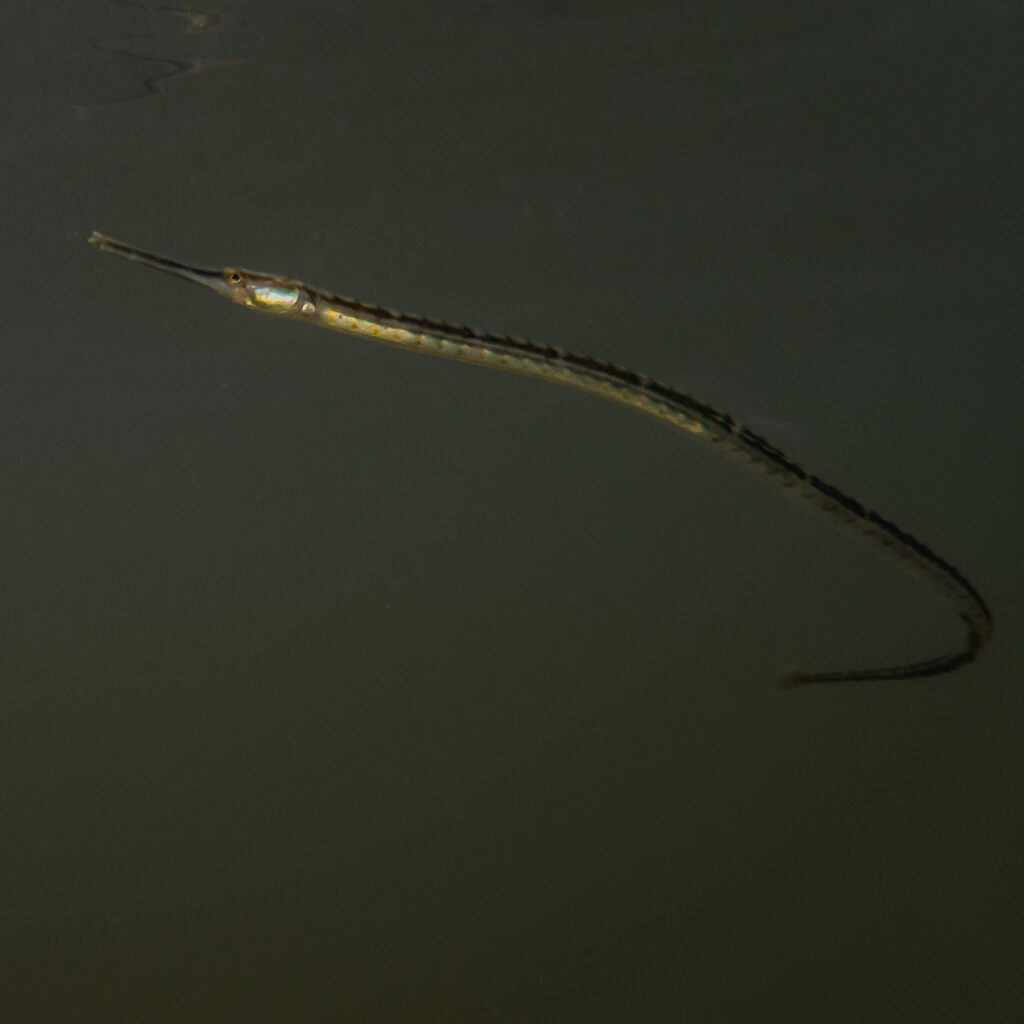
A Chain Pipefish swimming free in the Indian River Lagoon. (By Nick Davis.)
Despite its wide range, the Chain Pipefish is listed as “Data Deficient” on the IUCN Red List. This means there is insufficient information to assess its population trends and conservation status. However, like other syngnathid species, the Chain Pipefish faces several threats throughout its range, including in the Indian River Lagoon, where the A Rocha USA team in Florida has been working.
We know that the degradation of habitat and seagrass meadows – due to coastal development, pollution, and other disruptions in the Indian River Lagoon ecosystem – are major threats to local Chain Pipefish populations. Since this species is data-deficient, we are not entirely sure about some aspects of its ecology in the Indian River Lagoon and the extent to which its populations have declined.
The Chain Pipefish represents a valuable opportunity for conservation research due to its data-deficient status and the limited understanding of its ecology in the Indian River Lagoon. This lack of data is particularly concerning given the ongoing degradation of the pipefish’s habitat, which may threaten its presence in the lagoon.
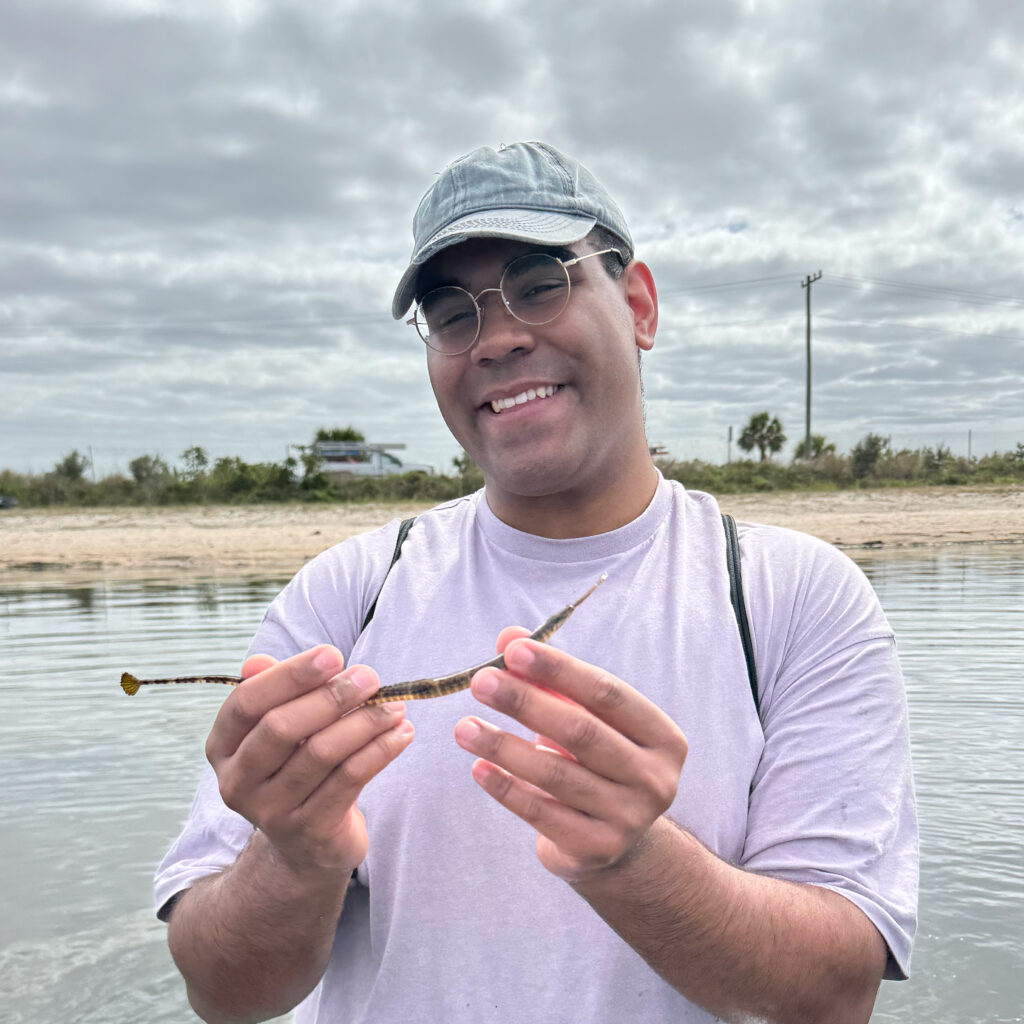
Nick Davis with a Chain Pipefish. (By Dr. Sarah Krejci.)
As a former A Rocha USA intern, and with the help of the A Rocha USA team in Florida, I am currently studying the habitat overlap between the Chain Pipefish and Gulf Pipefish (Syngnathus scovelli). This research aims to provide a better understanding of the ecology and interactions between these two closely related species, which coexist in some of the same habitats in the Indian River Lagoon.
Learn more about biodiversity in the Indian River Lagoon using this StoryMap!
The Chain Pipefish (Syngnathus louisianae)
(Image by Pauline Jacobson, under CC BY-NC 2.0 License.)
Range: Western Atlantic from Virginia (USA) to Jamaica; Gulf of Mexico.
Habitat: Heavily associated with seagrass beds. Can be found in fully marine coastal habitats, brackish estuaries, and sometimes full freshwater systems.
Physical Characteristics: Maximum length of about 14 inches. Typically brown and tan with a chain-like pattern running along its body. Long tubular snout.
Contributions: Helps control populations of small benthic crustaceans such as amphipods, copepods, and mysid shrimp. Also serves as prey for several species, including gulls and cormorants.
Fun Fact: The female pipefish will often be more ornamented and colorful to attract male fish.
Conservation Status: Data Deficient.

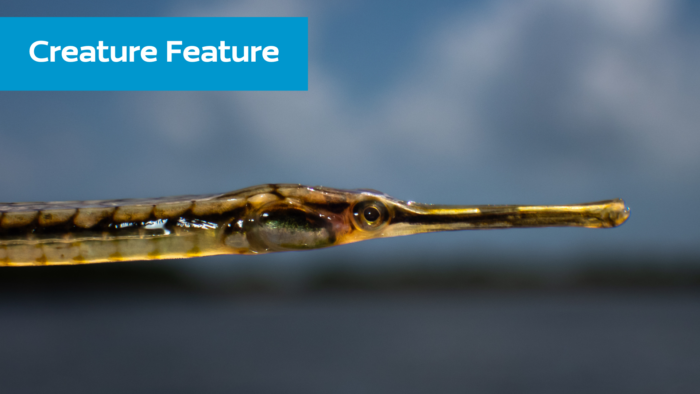
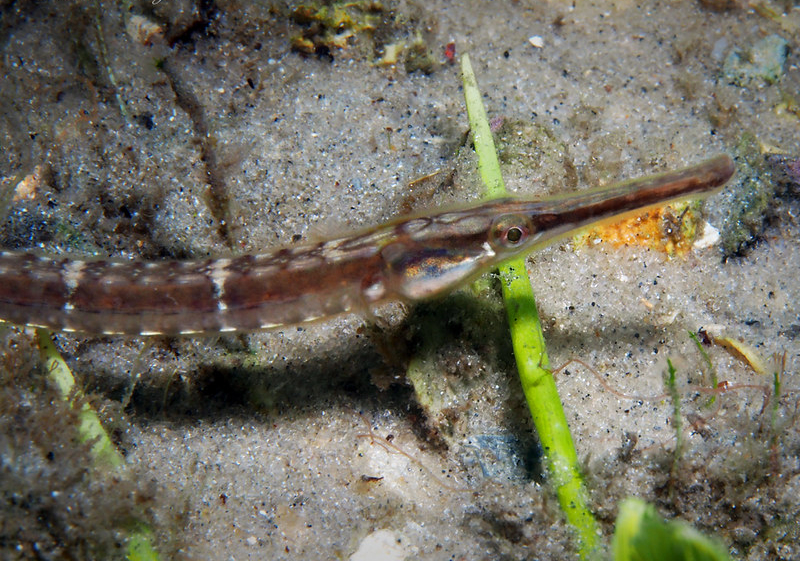







This article is so informative and interesting!